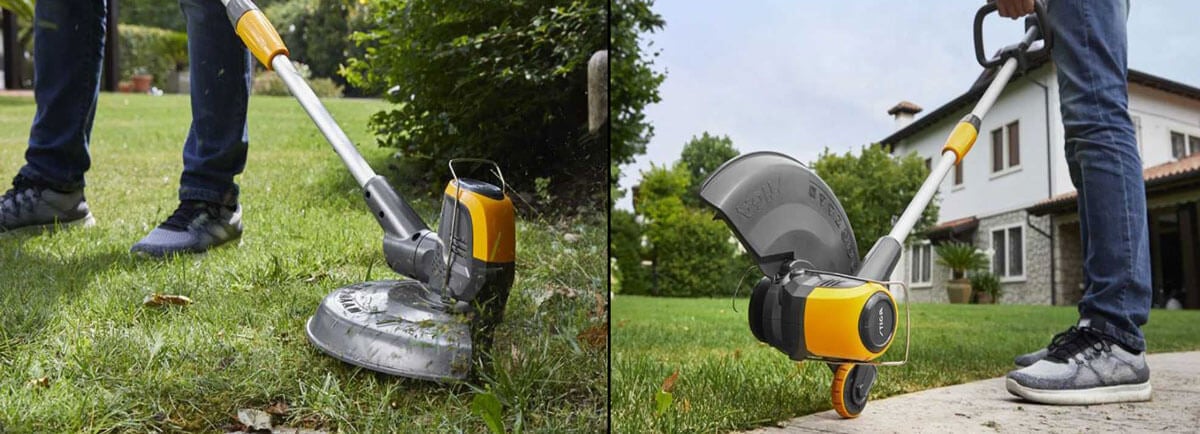A comprehensive guide to purchasing the best edge trimmers, with many useful tips on use and maintenance.
Purchasing Guide to Edge Trimmers,
Complete and Edited by the Real Lawn Mowing and Maintenance Experts
CONTENTS
1. Introduction
Edge trimmers are tools that are very similar in shape and usage to classic brush cutters, but differ in the cutting operations they perform.
What is the difference between a brush cutter and a edge trimmer?
As we all know, brush cutters are used for the actual mowing of wild grass or brushwood on lawns, grounds and large spaces, edge trimmers, on the other hand, have more of a lawn or garden trimming purpose.
How then to choose between one and the other? Understanding and navigating your way to the most suitable product for your needs may not be easy, but in this Purchasing Guide we will try to provide you with all the necessary information.
If you also want to know all the features, models and functions of brush cutters, read our dedicated guides.
What is the grass trimmer for?
Grass trimmers are used to cut and trim grass in places where it is not possible to reach with a brush cutter, such as behind a hedge, around trees, flower beds and obstacles, but also on large green spaces full of obstacles, where an optimal cut cannot be achieved with a classic lawn mower.
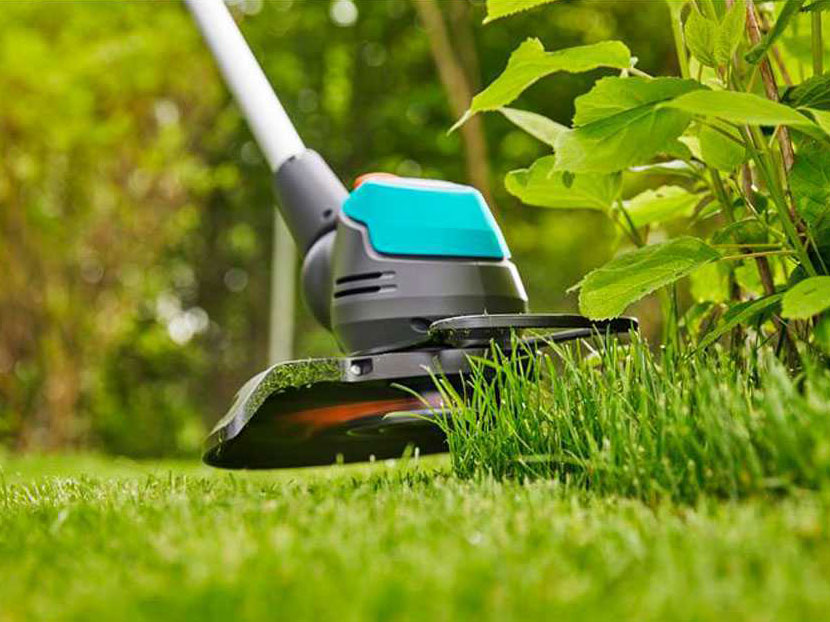
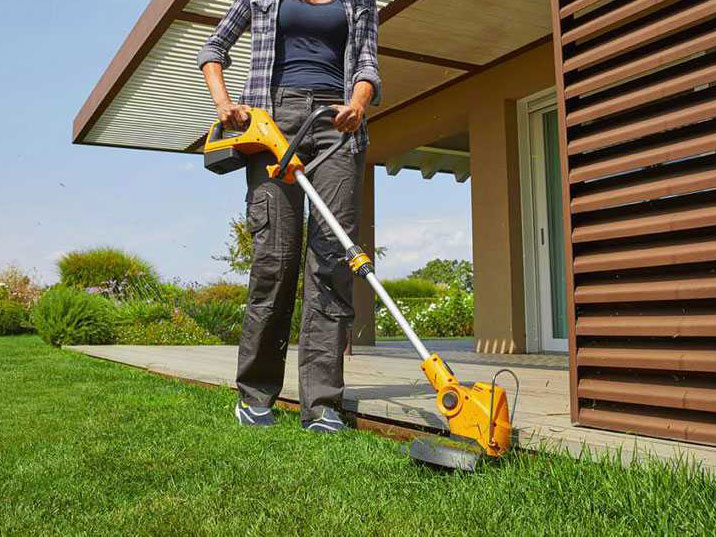
2. Main differences between Edge Trimmers and Brush Cutters
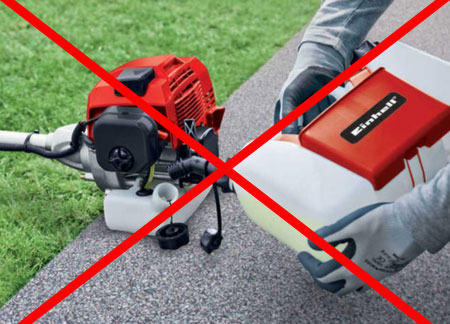
Edge Trimmers and Brush Cutters are aesthetically very similar to one another, and share many features that we shall see later in the guide.
However, they differ from one another in one fundamental aspect:
The presence of an internal combustion engine.
As we mentioned in the introduction, brush cutters are designed for the most demanding cutting operations, for which petrol-powered brush cutters are almost exclusively used, precisely because of the need for a powerful engine and a machine with great performance.
Edge trimmers, on the other hand, perform mainly trimming work, and therefore do not need a lot of power, but better manoeuvrability, since they have to cut on narrow portions of ground that are difficult to reach.
The presence of an internal combustion engine would therefore make them too heavy and much more difficult to use.
Precisely for these reasons, grass trimmers are divided into two feed types:
Electric edge trimmers must necessarily be used close to electrical sockets, so their ease of use is highly dependent on the length of the power supply wire.
For this very reason, electric models are mainly used in small gardens and for less demanding operations.
Battery-powered edge trimmers, on the other hand, allow much more freedom, partly due to the constant progress of batteries, which now provide good working ranges and excellent power.


The lack of a internal combustion engine not only has a great influence on the practicality of the machine, but also on maintenance.
Besides zeroing polluting and noise emissions during operation, there is also no need to carry out all those periodic checks and inspections that an internal combustion engine needs, such as checking the air filter, checking and replacing spark plugs, oil, etc.
Let us then analyse, step by step, how the lack of an internal combustion engine affects these aspects.
2.1 Weight
It is the first aspect that affects the practicality and manoeuvrability of edge trimmers and which sets them apart from brush cutters, especially petrol models.
The lack of the engine significantly reduces the total weight of the machine, as well as removing a considerable amount of space for the operator.
The total weight of both electric ad battery-powered edge trimmers hardly exceeds 7 kg, making them comfortable and light for all operations.
2.2 Maintenance
The required maintenance is also very low, just like in electric and battery-powered brush cutters. As a matter of fact, edge trimmers do not mount an internal combustion engine, eliminating all maintenance work, whether ordinary or non-ordinary, that a petrol engine requires, except for that related to charging the battery, especially after long periods of inactivity.
Whereas in internal combustion engines, there are numerous parts that are prone to failure, breakdowns and require constant and thorough maintenance: from the spark plug to the air filter to the periodic oil check.
2.3 Emissions
Lastly, let’s consider their level of both noise and pollutant emissions.
As far as noise emissions are concerned, these are minimal in edge trimmers since the electric and battery-powered motors generate almost zero decibels during operation.
Pollutant emissions, likewise, are zero, given the absence of an internal combustion engine and consequently all the exhaust fumes it produces.
Let us now try to list in a table the main features and properties of Edge Trimmers and Brush Cutters.
| Edge trimmers | Internal Combustion Brush Cutter | Electric Brush Cutters (230V) | Battery-powered Brush Cutters | |
| Weight | 3 to 6.5 Kg | 4 to over 10 Kg | 3.5 to 7 Kg | 3 to 7.5 Kg |
| Maintenance Level | Low | High | Zero | Low |
| Power | Medium – Low | High | Low | Medium |
| Noise Emissions | Zero | High | Zero | Zero |
| Pollutant Emissions | Zero | High | Zero | Zero |
3. Power and Autonomy
Let us now see what the power of electric and battery-powered edge trimmers respectively can be, how to calculate it and then try to classify their use according to all these values.
3.1 Power of the electric edge trimmer
The power of the electric edge trimmer is expressed in watts, this figure represents the electrical power that is absorbed when the machine is running.
The nominal power that electric edge trimmers are capable of delivering can range from a minimum of 250 W in lower-end models, 500 W in mid-range models up to 900 W in higher-end models.
3.2 Power of the battery-powered edge trimmer
The two main aspects to be aware of in a battery-powered machine are Voltage (V) and Amperage (A ), which stand for Power and Autonomy respectively.
Voltage is the unit of electrical voltage, so a higher voltage equals more power output.
Amperes, on the other hand, are the unit of electrical charge, measuring the amount of charge required to deliver one ampere for one hour, so a higher amperage equals greater autonomy.
For battery-powered machines too, there is a third value that always relates to the motor power, the Watts, which are, however, interpreted differently from those of electric models. In electric models, this figure is always stated, since it is the main means of comparison, yet in battery-powered models it is often missing, even in the instruction manuals, so how should they be calculated?
The formula for calculating the watts of a battery-powered machine is simple:
W = V x A → Watt = Voltage x Amperage
But let’s look at a practical example where this calculation can be applied, let’s consider a DeWalt edge trimmer powered by an 18V, 5 Ah battery.
The calculation is: W= 18 (V) x 5 (Ah) = 90 W
Therefore the total Watts of the machine are 90. We can thus list, in the table below, average ranges of Voltage and Amperage, resulting in nominal Power.
| Volts | Amperes | Nominal Power – Watts |
| 18 – 36 V | 1.5 – 3 Ah | Less than 150 W |
| 40 – 60 V | 4 – 5 Ah | 150 – 300 W |
4. Handles
Another similar feature between edge trimmers and brush cutters is the handle. Again, there are two different types of handles:
- Single Handle;
- Double Handle;
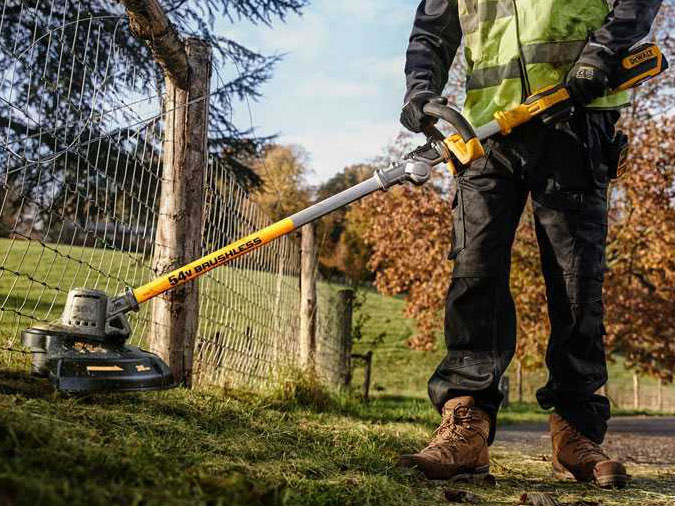
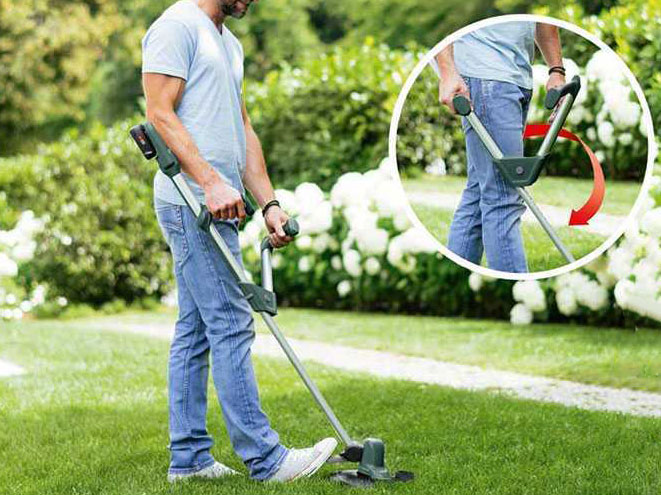
Almost all edge trimmers, whether electric or battery-powered, feature a single handle, since as we have said, they are light and easy to handle machines.
How to use the edge trimmer?
The grip performed on the machine then, is with one hand grasping the handle and the other hand resting on the handle where controls are located.
Exceptionally, we can find edge trimmers with a double handle; however, this is not to be confused with the double handle, also known as the ‘biker’ handle, found on brush cutters.
In fact, this type of handle is found on the heaviest and most challenging models, allowing the operator to balance the total weight of the machine on both hands, facilitating cutting operations.
On edge trimmers, on the other hand, its function is mainly to allow the user to cut at various angles, reaching even the most inconvenient spaces more easily.
5. Heads
The main feature of edge trimmer heads is that they can quickly switch between trimming and edging.
In fact, the cutting unit of the edge trimmers can perform a dual function, i.e. grass cutting, albeit for minor operations, and trimming.
This function allows the grass grown under plants and flower beds, as well as grass grown along walls or driveways, to be trimmed.
Switching between these two cutting systems is quite variable, on some models the head can rotate up to 45° to the left and right, on others the cutting system is changed by pressing a special control.
On some others, the finishing depends on the presence of one or more wheels fitted directly above the axle guard, which allow the operator to cut in 2 different positions:
- Horizontal position for grass cutting;
- Vertical position for edge trimming.
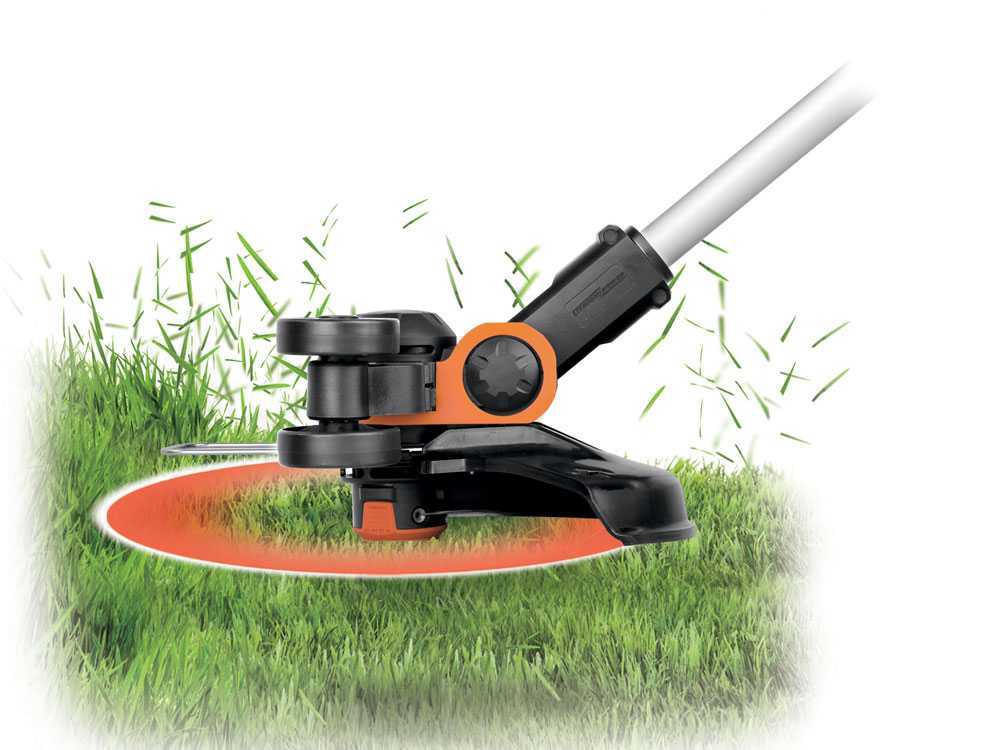
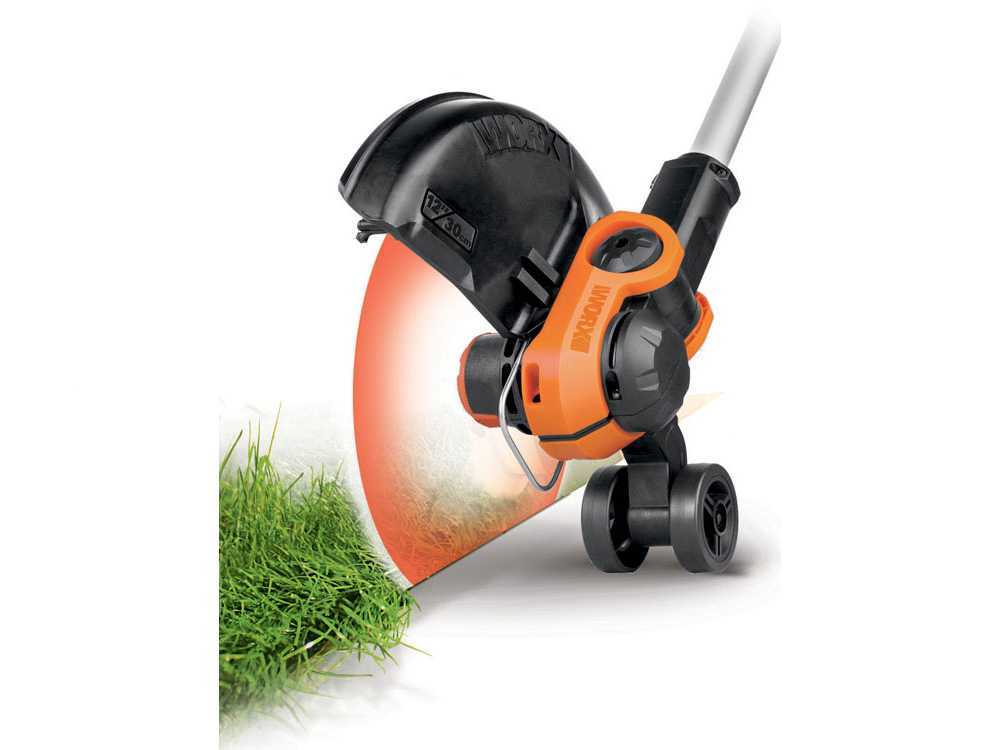
The video below, taken from our YouTube page, shows a trimmer performing both types of cut.
The two main cutting units available are:
- Line head;
- Hard plastic blade head.
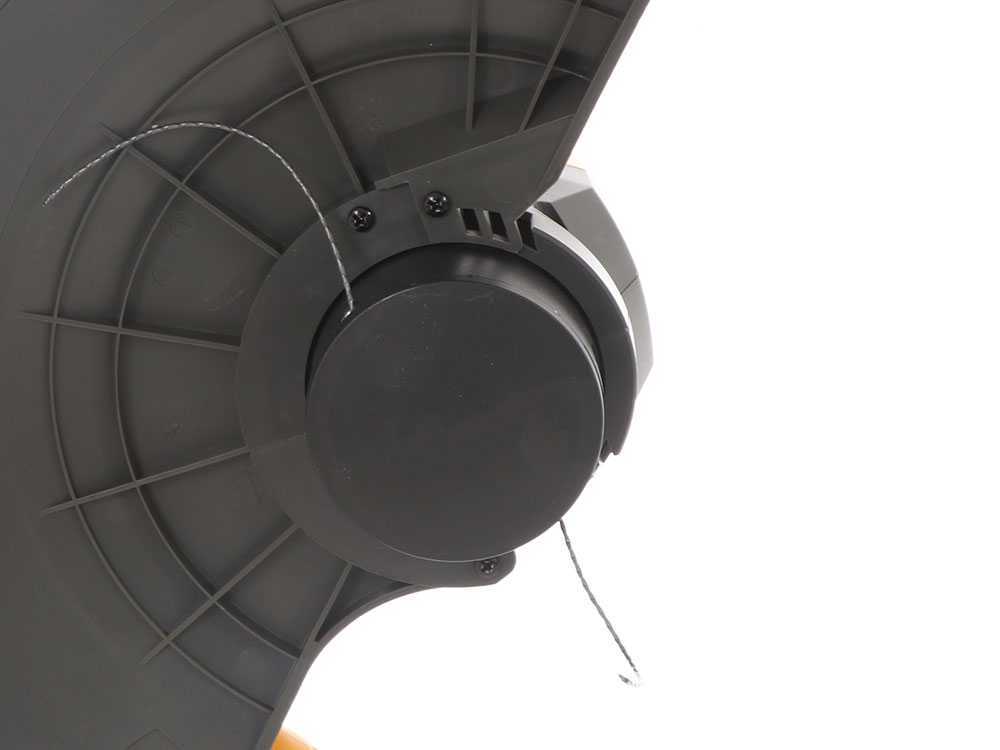
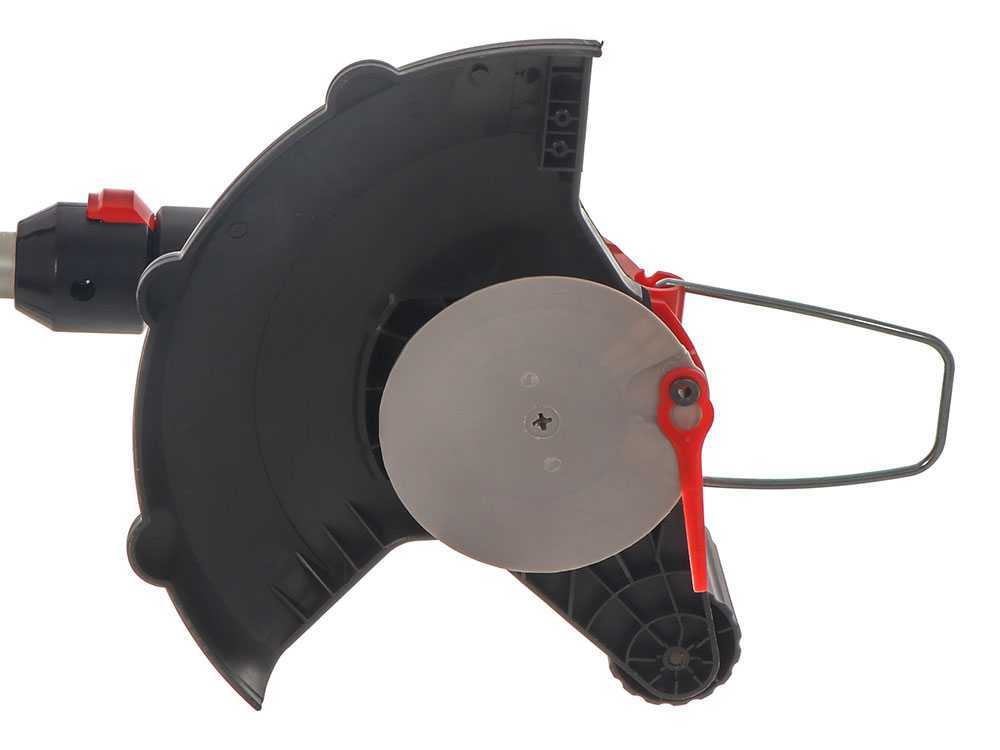
5.1 Line Head
The line cutting head is the most widely used cutting head on edge trimmers, as it offers more versatility than blades.
Cutting with a line is indeed more neat, especially for hard-to-reach spaces.
The structure is the same as the heads found on brush cutters, i.e. a ball of nylon line with only two ends poking out.
When the spool containing the line starts to turn, it causes the two ends to stiffen up, allowing the grass to be cut comfortably.
It is important, while using this type of head, to avoid accidentally coming into contact with branches or stones that are too strong, as it could cause it to break.
The most common line head nowadays is the ‘Tap & Go’ head, which can be opened and adjusted without the use of a spanner or other tools, and which allows the line to be moved forward simply by pressing it against the ground while rotating.
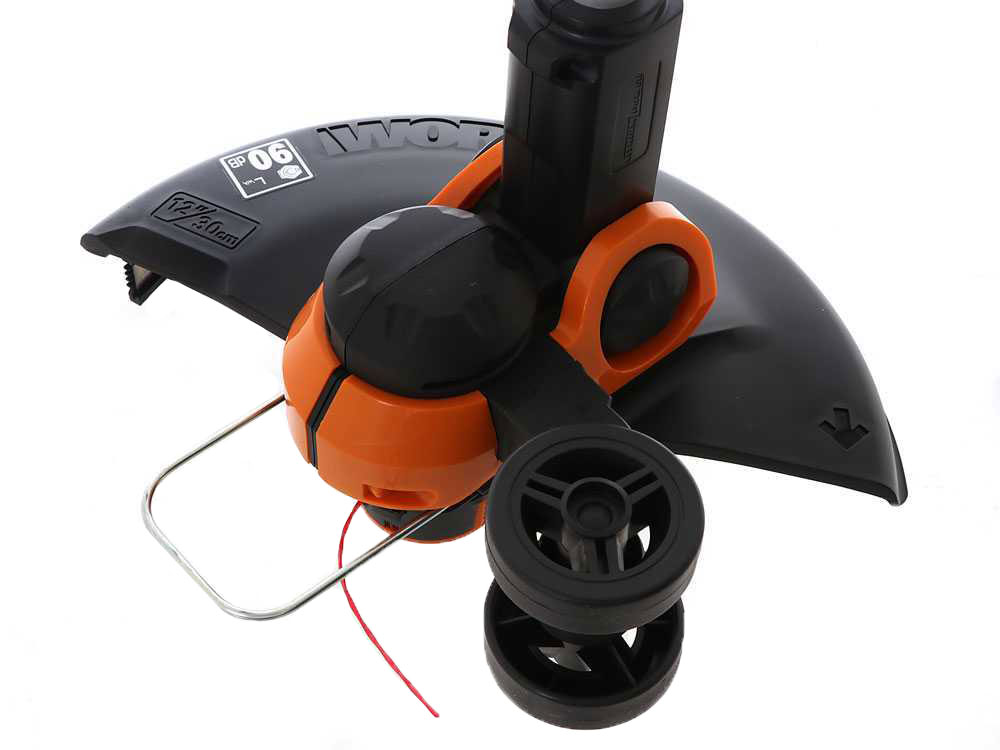
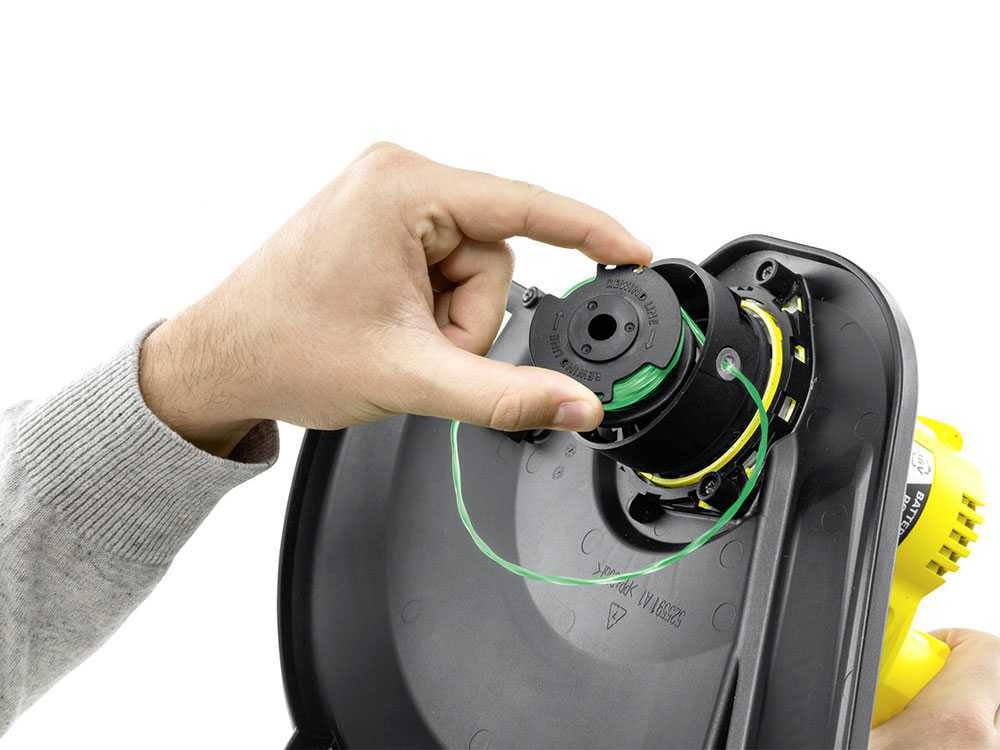
5.2 Blade Head
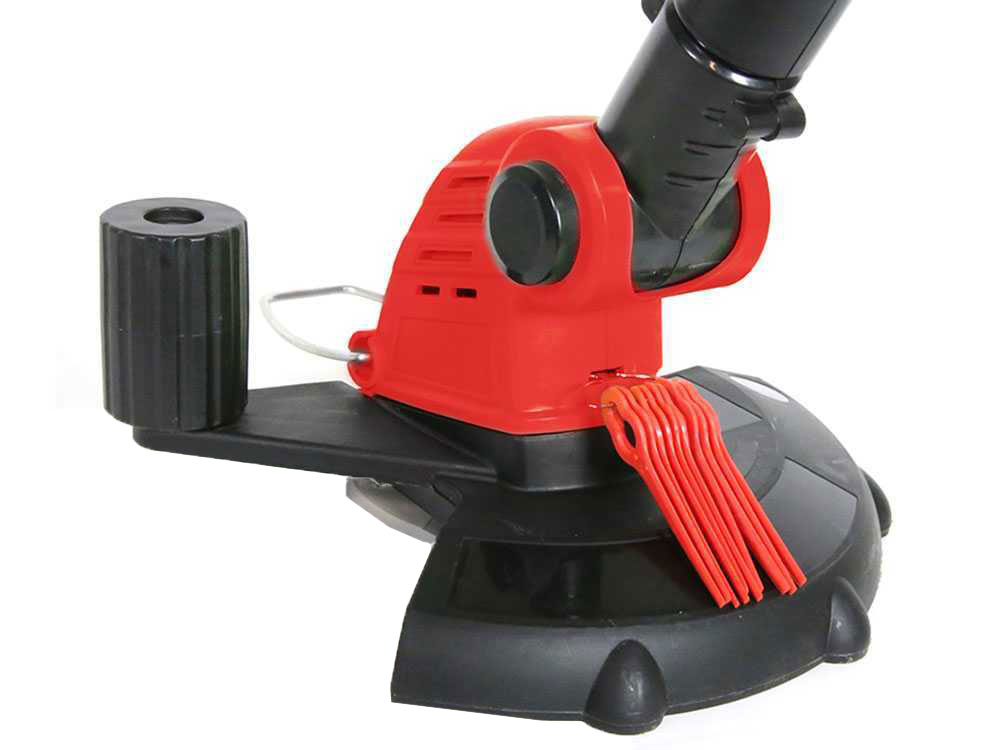
The blade head is, as mentioned, not very common, given the type of work that is carried out with edge trimmers.
Due to less demanding cutting, the blades are made of plastic, and not hardened steel as found on brush cutters.
This type of head is by design stronger than nylon line and can also withstand impacts with stones and other obstacles on the ground.
6. Rods
Edge trimmers rods are divided into two types:
- Straight rod;
- Curved rod.
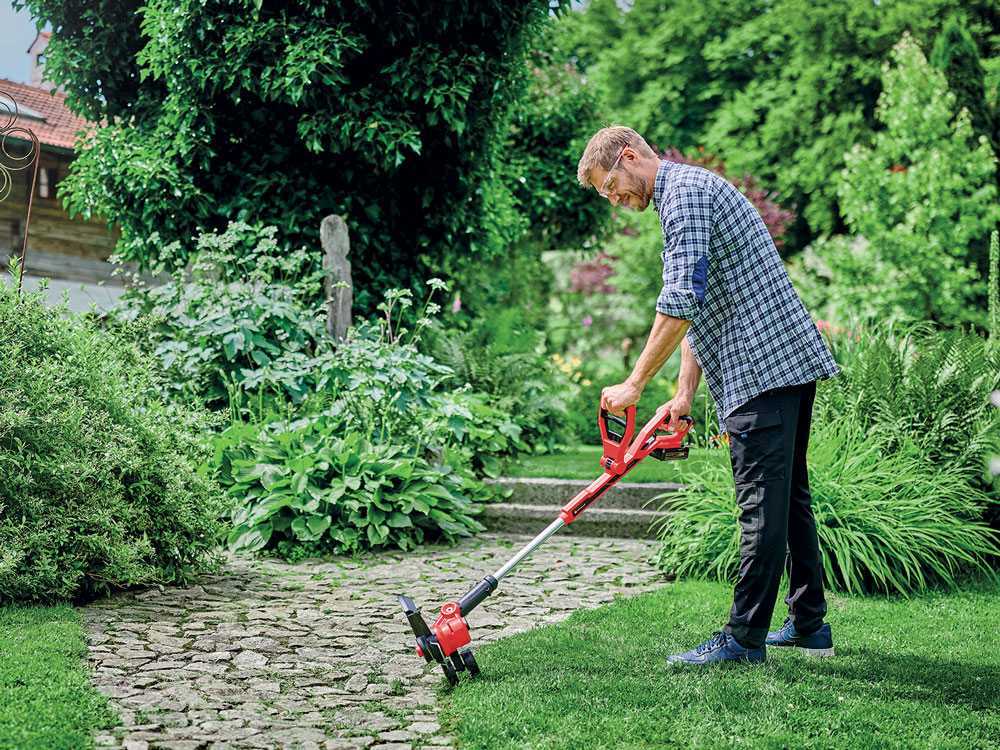
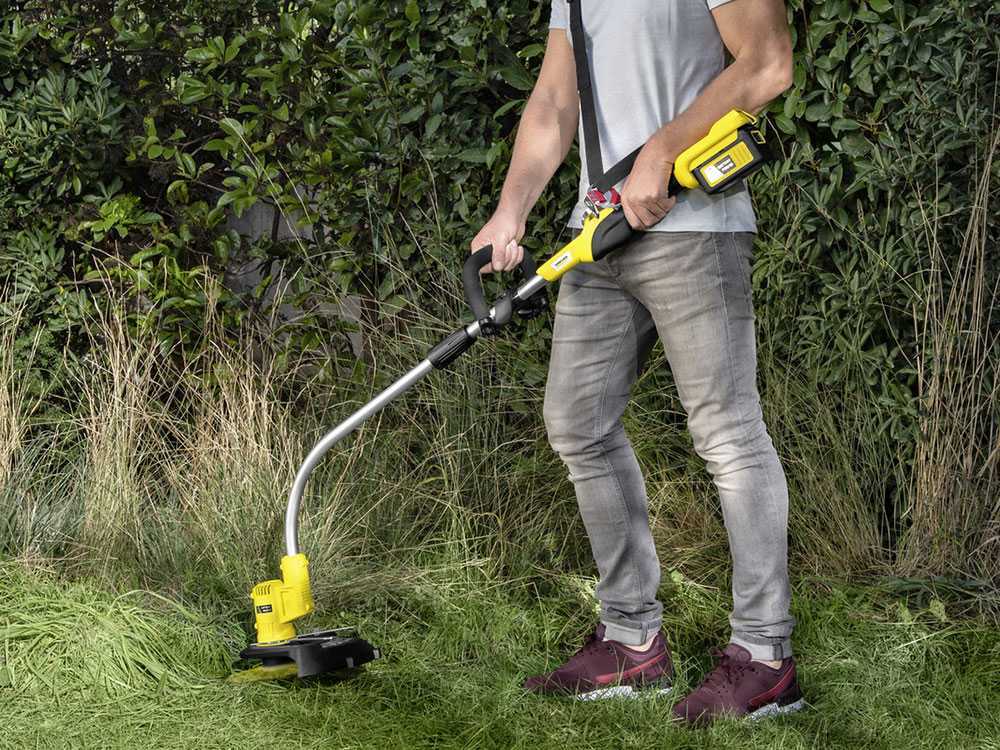
- Straight rods are the most common; the diameter can vary, depending on the power and size of the trimmer.
- Curved rods are rare; they help reach tight and narrow places more easily, where it would be difficult to reach with straight rods.
Their diameters are variable, depending on the performance and the type of the machine, but they can be resumed as follows:
– Rods with a diameter ranging from 23 to 25 mm → Trimmer for purely domestic use;
– Rods with a diameter ranging from 26 to 28 mm → Trimmer for limited use;
– Rods with a diameter exceeding 28 mm → Trimmer for medium use.
Both types can be either telescopic or, in some cases, split into two parts to facilitate storage.
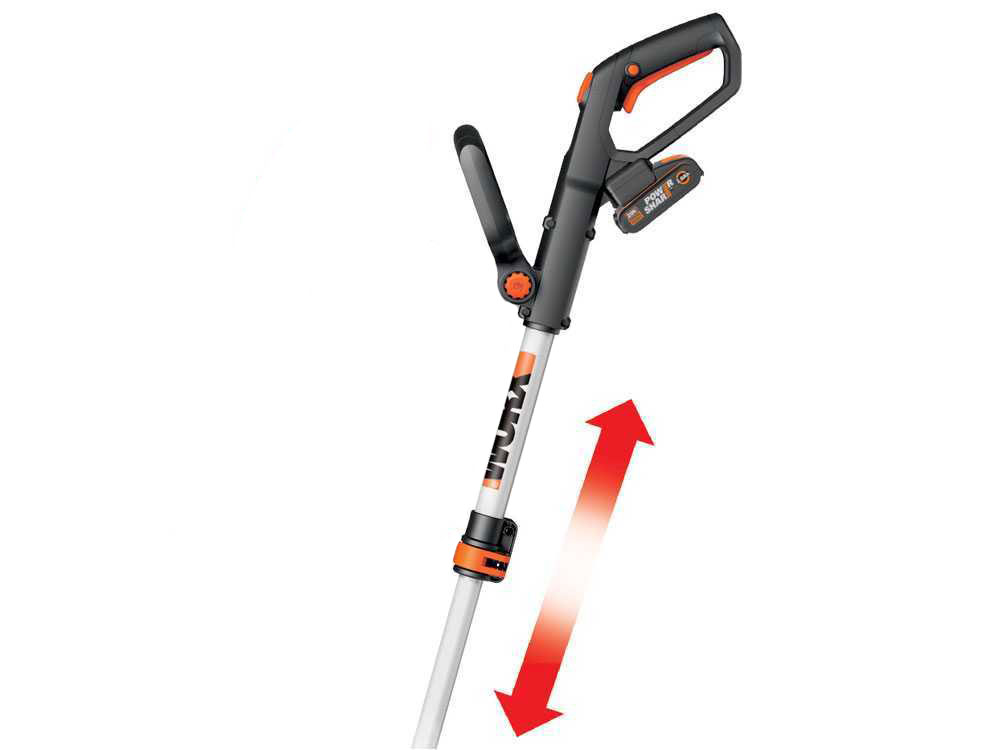
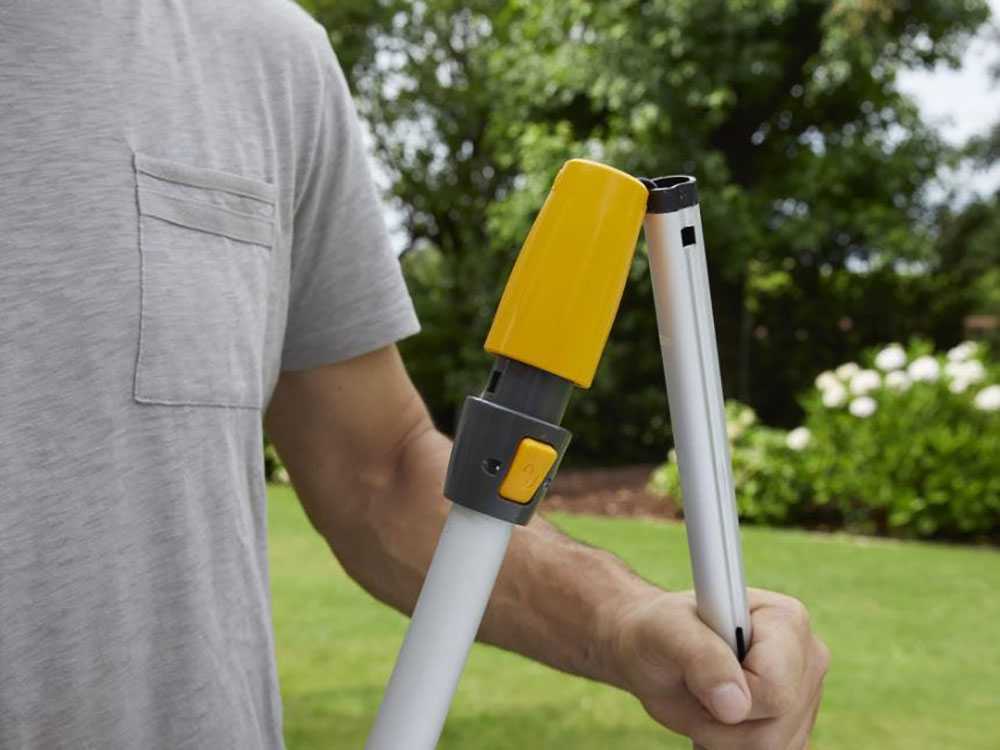
7. Lawn Mower Attachment
The lawn mower attachment is very useful if you want to combine trimming work with real mowing sessions, comparable to those of a classic lawn mower.
In fact, its operation is the same, it is a base that can be fitted as desired, consisting of 4 wheels and a cutting deck with wire.
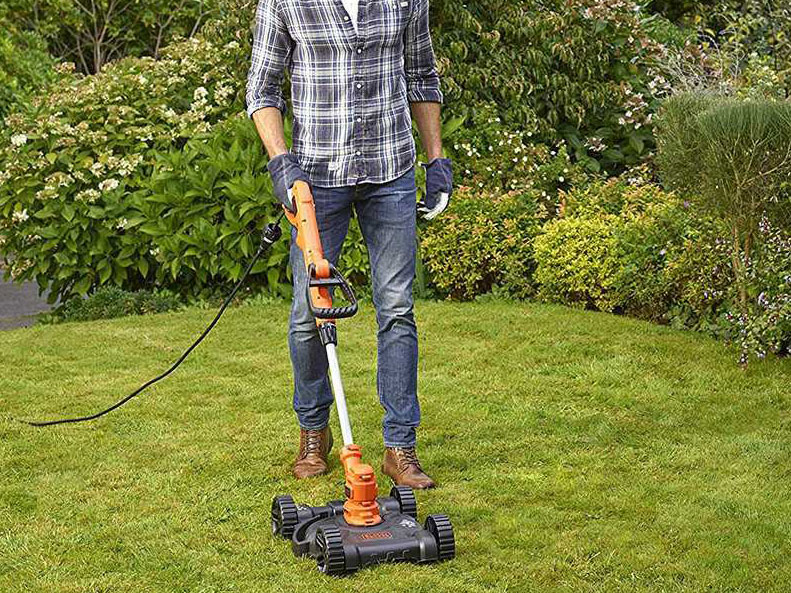
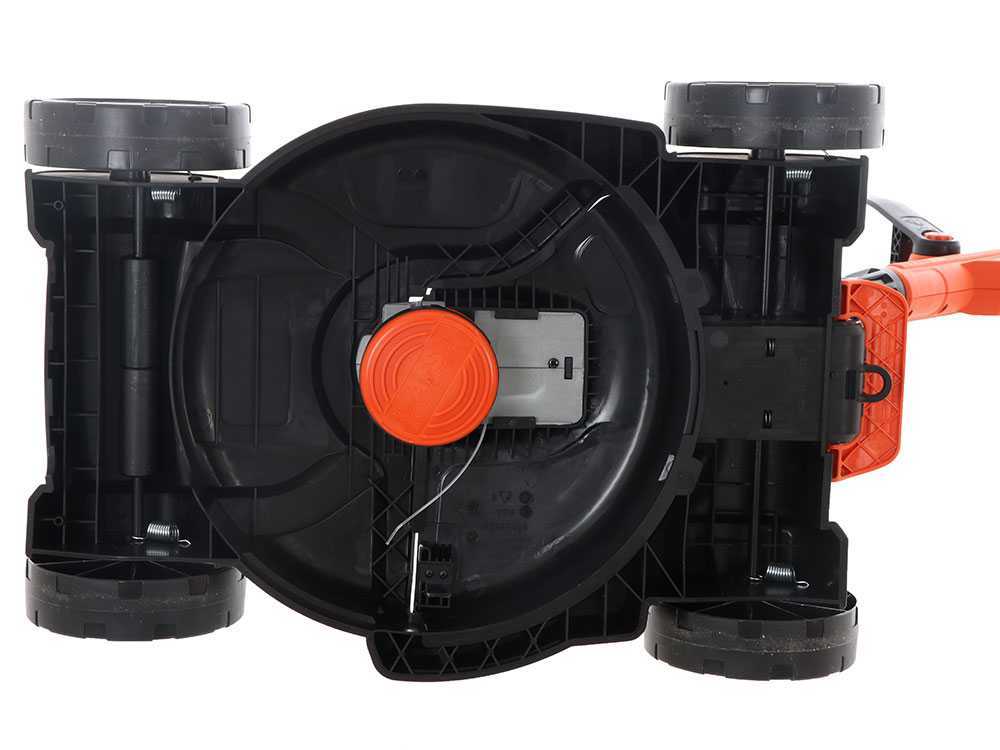
The cutting deck measures widths of up to 28-30 cm, thus allowing faster operation and, above all, mowing even on medium-sized gardens.
8. Frequently asked questions from our customers
The price of an edge trimmer starts from 30€ for the more limited models up to 450€.
The best brands of battery-powered edge trimmers are: Bosch, Karcher, Einhell, Ryobi and Worx.
You can also cut grass with a edge trimmer, but you can only use it for small green spaces and grass that is not too tall.
An edge trimmer can be used to cut grass at the base of plants, along driveways and behind flower beds or fences.
Adjusting the line on almost all edge trimmers is quick and easy, just press the head down to choose the right length.



